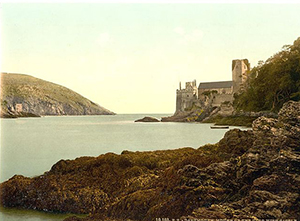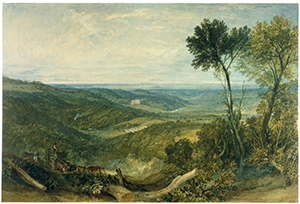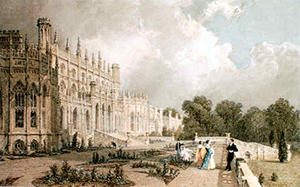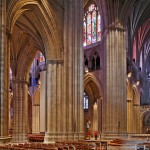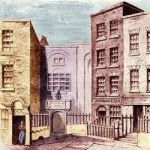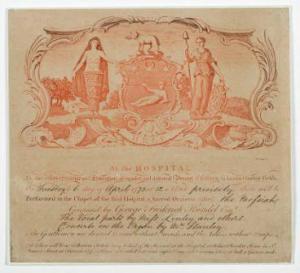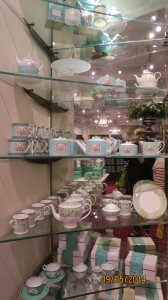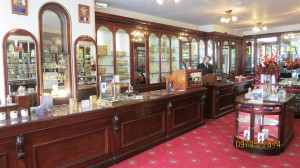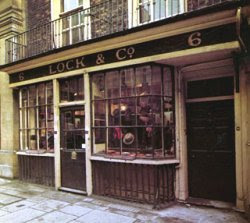 Thursday I finished the copy edits for my February 2015 novella, When Good Earls Go Bad. Here’s the blurb:
Thursday I finished the copy edits for my February 2015 novella, When Good Earls Go Bad. Here’s the blurb:
What’s a lovely young woman doing asleep in his bed? Matthew, Earl of Selkirk, is shocked to discover it’s his new housekeeper! She’s a far cry from the gray-haired woman he expected. Matthew is no fan of surprises, and Annabelle Tyne is pure temptation. Perhaps he shouldn’t have had her hired sight unseen.
Annabelle, co-owner of the Quality Employment Agency, is no housekeeper, but she wasn’t about to lose a potential client simply because there was no one to fit the bill. Imagine her shock when the earl arrives at his London townhome and she’s awoken in the night by the most attractive man she’s ever seen.
Matthew is a man who lives life by the rules, but sometimes rules are made to be broken … and being bad can be very, very good.
And here is the part where he ends up in her bed:
Annabelle had never been so comfortable before, or at least it felt that way. The bed was soft and warm, the house was quiet, just a slight rustling of something, fabric maybe? Then the feel of another body easing into—
“What? Who? What are you doing in here?” she said, kicking at the other occupant of the bed, who was not only someone she’d not invited in, but definitely not anyone she’d even ever met before.
It was light enough in the room, thanks to the moonlight, to see it was a man, which did not reassure her. From what she saw of his expression, however, he was just as startled as she was to find her there. Well, she was not startled to find herself there, but she was startled to find him.
Perhaps she would not be the best person to lead the How to Speak to Annabelle course, since she barely understood herself what she was thinking.
“Who are you?” His voice held a foreign accent, but it was his obvious outrage that she listened to the most.
“Who am I?” she said, pushing herself back into the corner of the bed, her back making a comforting contact with the wall. “Who am I? I am supposed to be here, whereas you . . .”
“Are supposed to be here also,” he replied, before she could finish her sentence.
And the foreign accent clicked it all into place, and she felt her stomach whoosh in panic and terror and . . .
“You’re the earl. And you’re early.”
His face did not change, not even when she stressed “early” as in earl-y.
“And who are you?” he said, folding his arms across his—oh my goodness—naked chest.
“The housekeeper?” Annabelle hated that her voice rose at the end, as though she weren’t quite sure herself. “The housekeeper,” she said, this time in a much firmer tone. But not nearly as firm as his chest was; it was rippled throughout with all sorts of intriguing muscles and a light dusting of dark chest hair, and his shoulders were so broad it seemed he filled the room, or at least her vision of the room.
And suddenly she was even warmer in her bed than she’d been five minutes ago.
The Scottish earl should not be this attractive, which she could tell even only by the moonlight. Imagine the impact when she viewed him with the full strength of the sun. She shuddered at the thought, only the shudder somehow seemed to feel more like a shiver. Of something.
“You were not to arrive until tomorrow,” he said, his voice, despite the nice Scottish burr, practically dripping disdain.
“Well, I’m here, and so are you, and here we are, and you are nearly, well, if I might say so, you are nearly naked,” Annabelle finished in a rush, trying very hard not to look there, not where there were some interesting parts covered by his underclothes.
Even in the dim light she could see when he realized just how he must look, his eyebrows raising up so far up his face it seemed as though he might just take flight, his eyes wide.
“Mrs. Housekeeper, I promise you, I am not in the habit of . . .” he began, then spun on his heels—or his bare feet, actually, since he wasn’t wearing boots, presenting Annabelle with a view of a very strong, very broad back, with some even more interesting divots that were on either side of his lower spine.
This was probably the zaniest book I have ever written (which is saying something!), and I had such fun writing it. It comes out February 10, 2015.


